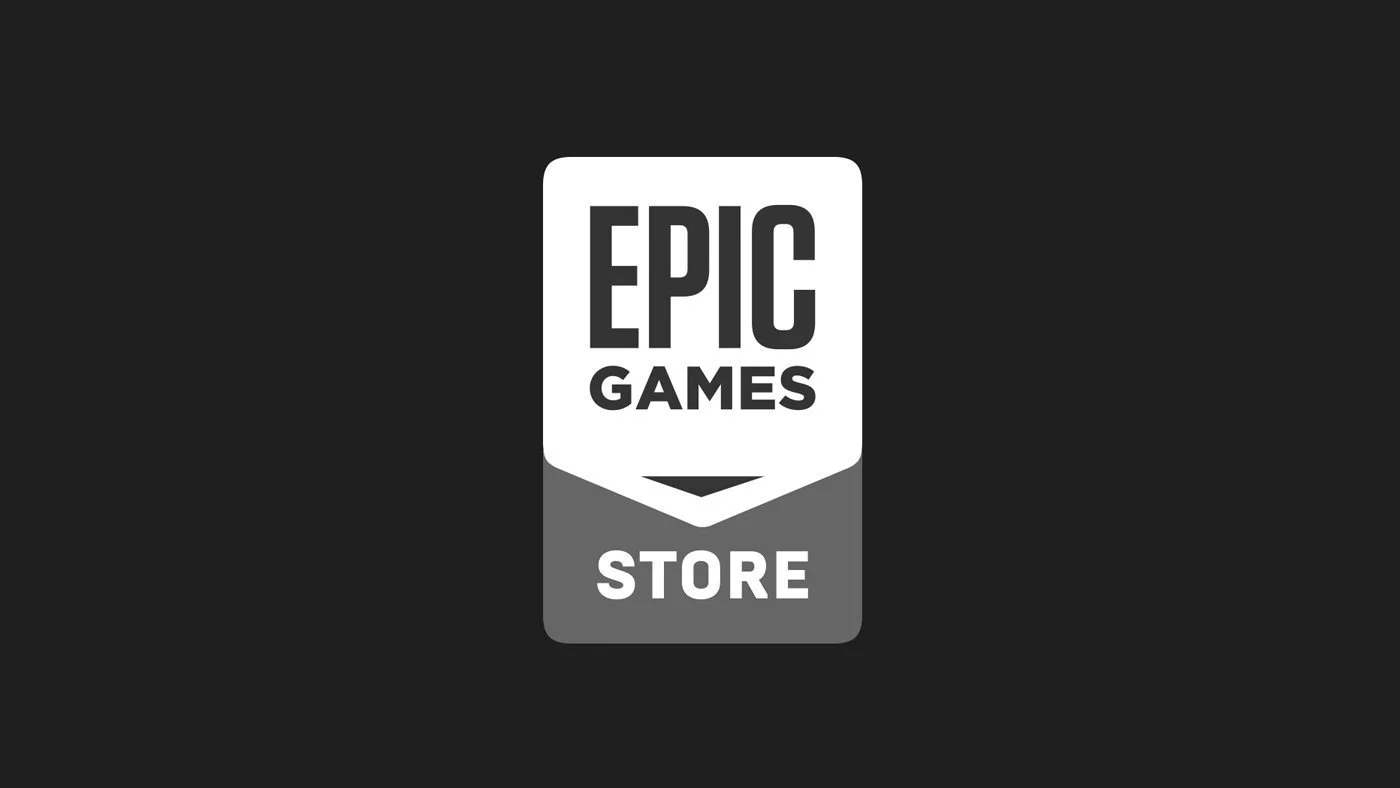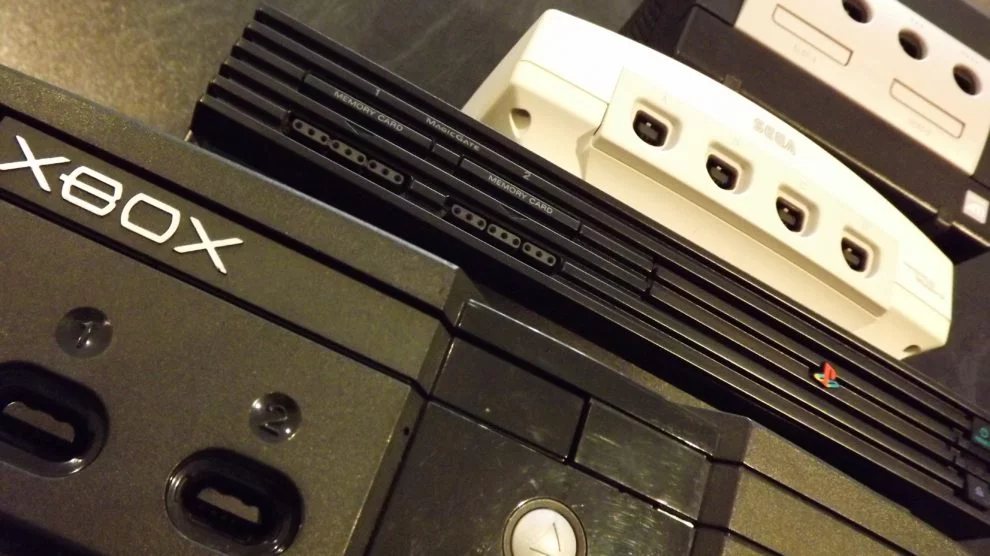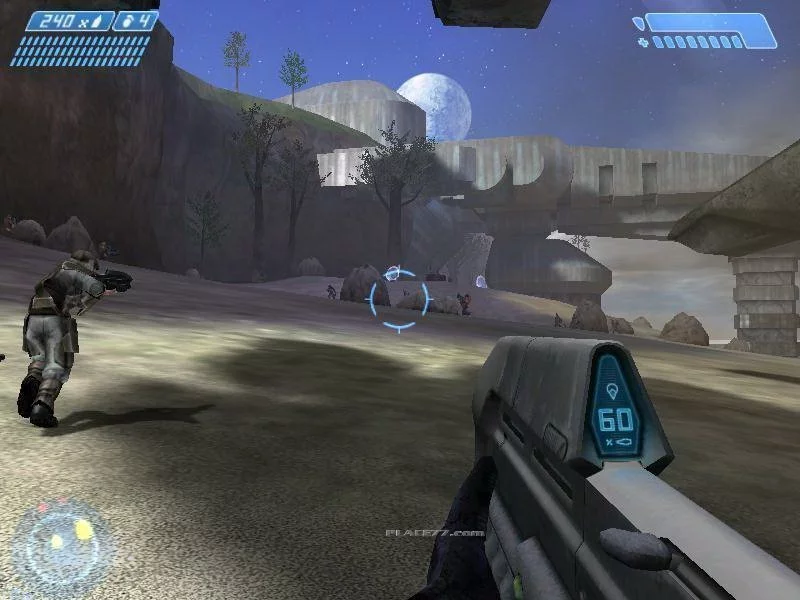Welcome to part six of our feature covering the history of video game consoles. We’re almost at the end!
Stay tuned as we continue to cover off the difference between console generations—we’ll take a look at what’s changed and what hasn’t from a general perspective, as well as what was going down in the market at the time. Hopefully this will provide some insight into where we are at currently. That said, some of what was happening in the larger electronic entertainment market may well apply, but don’t be TOO despondent if we only gloss over something you’re really interested in.
Click here to read about Generation 1
Click here to read about Generation 2
Click here to read about Generation 3
Click here to read about Generation 4
Click here to read about Generation 5
Note: This series was written with the assistance of Noel Wheatley, the Stevivor.com TopGeek (@furysevensix), whose vast knowledge of videogame history and large collection of vintage and retro consoles are, in our opinion, second to none.
Generation 6: 1998 – 2005
Sony had taken the industry by storm. As a result of great hardware, excellent software, and fantastic third-party support (let’s not ignore the fact that many users were pleased that they could “acquire” games in a less-than-legal manner), PlayStation had pounded its competition into dust. Even the mighty Nintendo had gone from a powerhouse to just another also-ran.
Sega, though… Sega probably didn’t help themselves very much towards the end of the 4th generation, and this legacy carried over to hamper them in the fifth. As a result of poor Saturn sales, Sega knew that they had to get the jump on their competition, and released the first sixth generation machine in Japan in late 1998 (mid-to-late 1999 for the rest of the world).
Having learned from their mistakes, the Dreamcast was much easier to develop for than the ill-fated Saturn. Further, there were a number of innovations employed by the team that really helped to differentiate the Dreamcast from the rest of the market at the time.
Firstly, this was the first machine to ship with a built-in modem – dial-up only at first, with a broadband adapter later available. It could connect to its own network, called SegaNet (Dreamarena in Europe), and players could browse the ‘net and compete online – a first for the time. A keyboard and mouse were released for Internet browsing (the keyboard was also utilised in later titles such as Typing of the Dead, a House of the Dead port that required players to type words in order to ‘kill’ zombies). Sega even released a Karaoke accessory in Japan (Dream Karaoke), which also connected to a server from which songs could be downloaded (that said, they could not be saved, so players needed to download songs every session).
Beyond this, though, was the controller. Design-wise, Sega took quite a few pointers from their competition in terms of shape and button layout. However, there was also a slot in which a specialised memory card could be placed, which Sega referred to as a Visual Memory Unit (VMU). The VMU had a small LCD screen, as well as buttons (in some ways, it resembled a Game Boy), so not only would it save data, but it could be used to add game experiences (by displaying data while playing, or with mini games in which players could level up their characters, for example). It was a fresh idea, but ended up dying with the Dreamcast (there was a short-lived product released for the PlayStation, however, called the PocketStation).
For all its great ideas (the Dreamcast also eschewed a built-in Operating System and each title shipped a new and always up-to-date OS – while this was good in theory, it also meant that the Dreamcast was easily hacked), and all of its wonderful titles—some of which are VERY favourably remembered by the gaming community at large—the Dreamcast did not manage to make the kind of sales that Sega was hoping for. This may have been due to the relative failure of the Saturn, or the huge popularity of the PlayStation, or something else entirely, but Sega discontinued console manufacturing in 2001 and pulled out of the hardware business, having sold approximately 10 million units. Sega games (including Sonic the Hedgehog) are now available across all hardware platforms. Interestingly, there are still independent developers making titles for the Dreamcast, although official support ceased many years prior to this article.
It could be said that the announcement of PlayStation 2 in early 1999 signalled the death knell for the Dreamcast. With such a large market share, consumers were hanging on all news of the PS2, and it’s likely that many put off buying the Dreamcast as a result. Sony placed a lot of emphasis on its new Cell processor and Emotion engine, and positioned them as game-changing technology.
With its huge increase in power, as well as the capability to play DVDs (something the Dreamcast could not do), Sony was clearly positioning the PS2 as a device that could take over the living room – certainly the release of the PSX in Japan would suggest as much (this was a Digital Video Recorder as well as a PS2, and could also burn DVDs – in some ways it failed because it was ahead of its time, but it was mainly due to the extremely high asking price). Clearly, this approach was successful, as the PS2 sold out on release even given the high launch pricing. There were some issues in manufacturing initially, but the PS2 went on to outsell the original PlayStation and now holds the title of most popular home console with over 150 million units sold. Variants of the PS2 are still available around the world – it’s the only major console available that is not of the current generation.
I’ll add here that sometime during the sixth generation, the industry stopped referring to new consoles by the number of bits they pushed. Both Dreamcast and PS2 were marketed as 128-bit machines, but it no longer seemed to matter – what mattered more, it seemed, was the speed of the processors themselves (although the reality is that even this was not an accurate way of comparing systems).
Perhaps the industry reacted this way because Nintendo stopped playing the same game as its competition? The specifics of when and where are up for debate, but it was clear by the sixth generation that Nintendo was not really playing in the same ballpark, and the GameCube is a prime example.
Released in late 2001 in Japan and the US (early 2002 in Europe/Australia), the GameCube was a strange beast. Technically it was comparable to its brethren; however, the strangeness lay in its design. Shaped like a cube, with a handle on the back for carrying the unit around, gamers were unsure what to think. The controller was great, and included a second thumbstick, but the most controversial decision at the time was the media – while it did use discs, these were a proprietary format that could hold up to 1.5GB of data. This meant the system could not be used to play DVDs, and was limited in capacity against its competitors, whose DVDs had a capacity of 8.5GBs. Nintendo mentioned they were focusing on providing a game console at the time, and that most gamers would already have a DVD player. This was a stance that continued into the next generation – which is a bit of a surprise, as it is arguably a limiting factor of the GameCube and likely led to decreased sales in this generation (although this is up for debate).
Beyond the strange design and limited functionality, the GameCube was considered a family-friendly device, and sales among teenagers and adults tended towards competitor products. As a result of associated poor sales (particularly around sports titles), Nintendo lost several third-party developers and many titles released for the system seemed to be based on Nintendo mascots. Still, there were several successful mature titles for the system – including Eternal Darkness and Resident Evil 4, and the GameCube also saw the release of some (now) classic titles. In the end, Nintendo’s GameCube sold a respectable 22 million units, and was discontinued in 2007.
There was a surprise new player in this generation, though, from an unexpected source – Microsoft. As far back as 1998, several Microsoft engineers had begun independently investigating the potential to develop a home console based on DirectX technology. Affectionately, they referred to their pet project as their “DirectX Box,” which was of course shortened to Xbox after Microsoft management approved the project and put it into development, although there were no intentions at the time to release the console under this moniker.
The Xbox was announced by Bill Gates—a name synonymous with Microsoft—at the 2000 Game Developers Conference, and was the first video game console to ship with a built-in hard disk drive as standard. This provided a world of new possibilities, and impressed audiences at the time – for example, it negated the requirement for memory cards, and also allowed users to rip CDs to their HDD for custom game soundtracks. There were a number of new ideas implemented in the Xbox, ranging from real-time Dolby Digital sound and breakaway controller cables to prevent tripping and/or damage.
The console was essentially built from PC components – something that divided the console gaming community. It also meant that the original console was quite bulky and heavy, and it is argued that this did not aid in its uptake in Japan. The original controller was also deemed large by Microsoft Japan, and the console was released there with a ‘slim’ version of the controller.
Xbox was released in late 2001 in the US, and early 2002 in Japan – closely followed by Australia and Europe. While the system sold very well in the US (and Europe, for the most part), it sold very poorly in Japan, reportedly only selling 2 million units there (in total, the Xbox sold 24 million units in its lifetime – quite a good start for a new player).
Seeing a need to provide a killer title at launch, Microsoft purchased Bungie Studios from under Steve Jobs’ nose. Bungie was not owned by Apple; however, Jobs had announced and shown a demonstration of a first-person shooter called Halo at an Apple Macworld conference in 1999 – this was important at the time because it was on schedule to be released simultaneously on Mac and Windows (often, Mac games are released later than their PC counterparts). Come June 2000, Microsoft announced that they had acquired Bungie, and that Halo would be a launch title for their new home console. Halo went on to become a billion-dollar franchise (its sequel, Halo 2, was the best-selling title on the original Xbox), and remains immensely popular today.
The release of the Xbox into the home console market lead to a new console war, and many gamers argued the pros and cons of “Xbox vs PlayStation” (in place of “Sega vs Nintendo”) – perhaps reflective of the quality of Xbox. Still, there was initially a lot of disdain among gamers – potentially as a result of Microsoft’s ostensibly inexperienced approach to videogame marketing…
There was some uproar prior to release of the system around some screenshots of an Xbox launch title – Amped Snowboarding. According to the Internet hive mind, the screens were clearly photoshopped to look more impressive than they would actually appear in game. It is likely that this was the case (the idea that something is presented in its best possible light is a standard precept of marketing), however, there was never any official response from Microsoft. In addition, initial European advertisements created some controversy in the UK – one particular Xbox television commercial was banned in 2002 as it was deemed violent and distasteful. While it would appear now that Microsoft learned from these particular issues, I’m sure that neither helped in terms of sales.
A final important note to make here is in regards to connectivity. Given the rise in the popularity of online gaming, both Sony and Nintendo added an online component to their systems later in the lifespan, although both of these systems were decentralised (i.e., the functionality was offered on a per-title basis, as opposed to a system-wide basis). This was mostly in response to Microsoft’s hugely popular Xbox Live network, a centralised, console-wide experience which really paved the way for the additions in the next generation.
Primary Changes from Generation 5 to Generation 6
GEN5: Systems were defined the number of bits they pushed
- GEN6: Systems defined by clock speeds
INTRODUCED: Built-in modems
INTRODUCED: Online play
INTRODUCED: Videogame consoles as a home entertainment system
INTRODUCED: DVD/movie playback
INTRODUCED: Custom game soundtracks
INTRODUCED: Hard drives
INTRODUCED: Remote control accessories (for DVD playback)
INTRODUCED: Cameras for new play styles (PlayStation Eye, for example)
INTRODUCED: Music/rhythm games (Guitar Hero and Singstar, for example)
NOTE: Third-party developers also focused more on making multi-platform titles as opposed to developing titles exclusively for specific consoles
Coming up next: Connectivity vs innovation in the modern day
This article may contain affiliate links, meaning we could earn a small commission if you click-through and make a purchase. Stevivor is an independent outlet and our journalism is in no way influenced by any advertiser or commercial initiative.






























